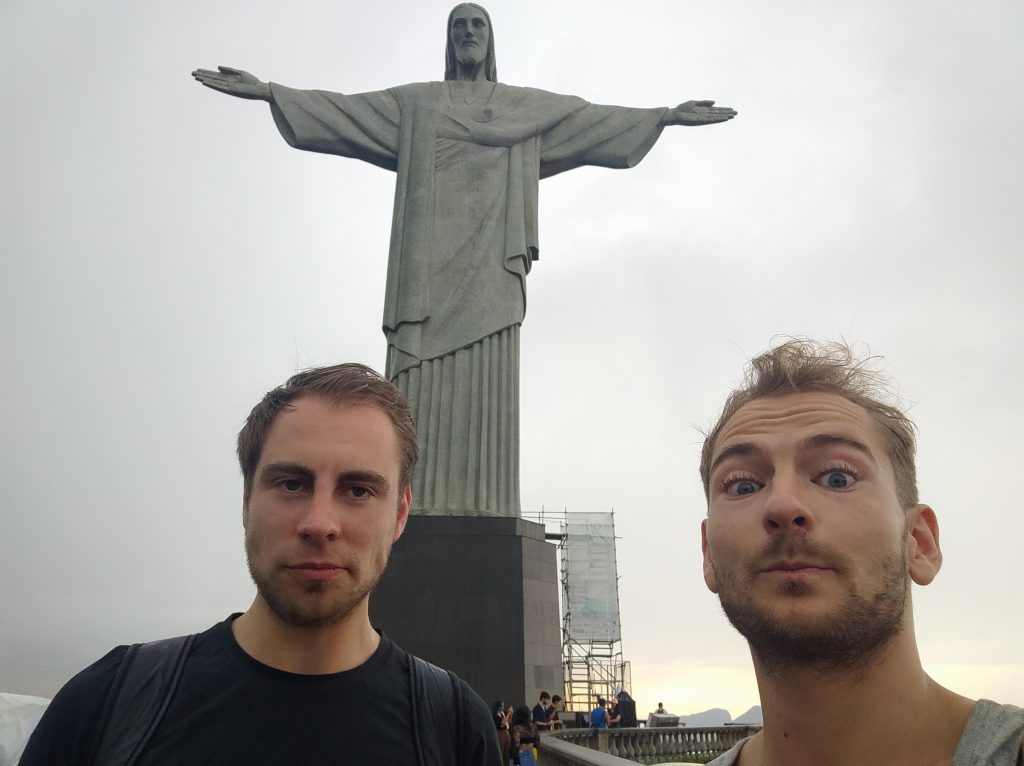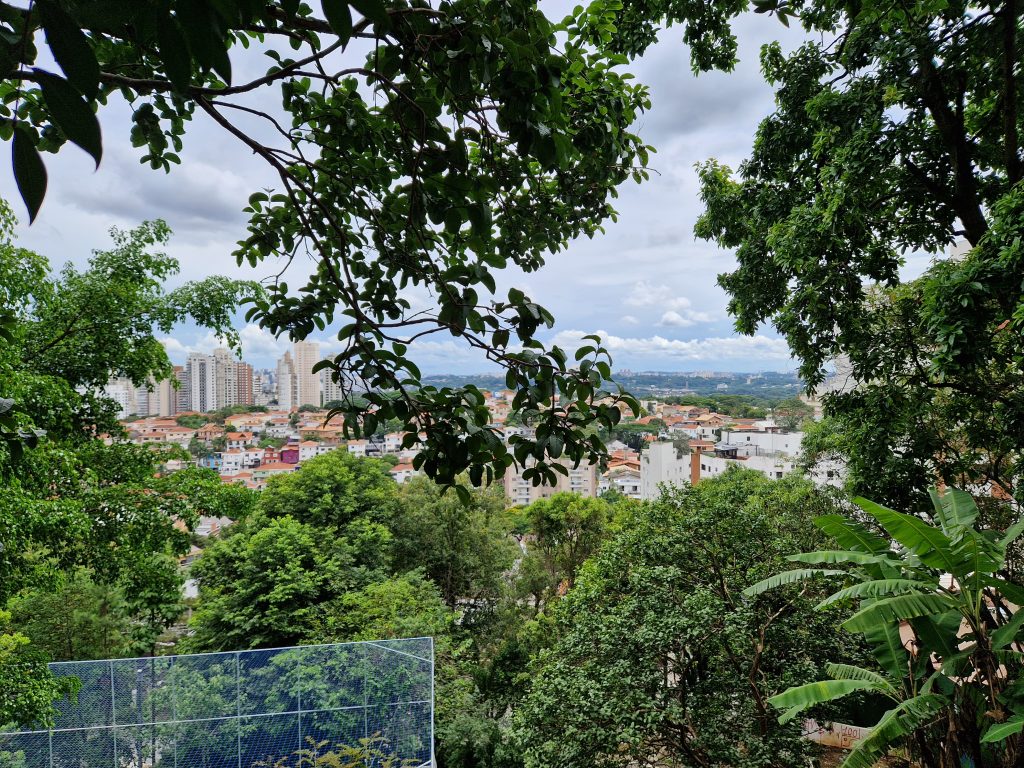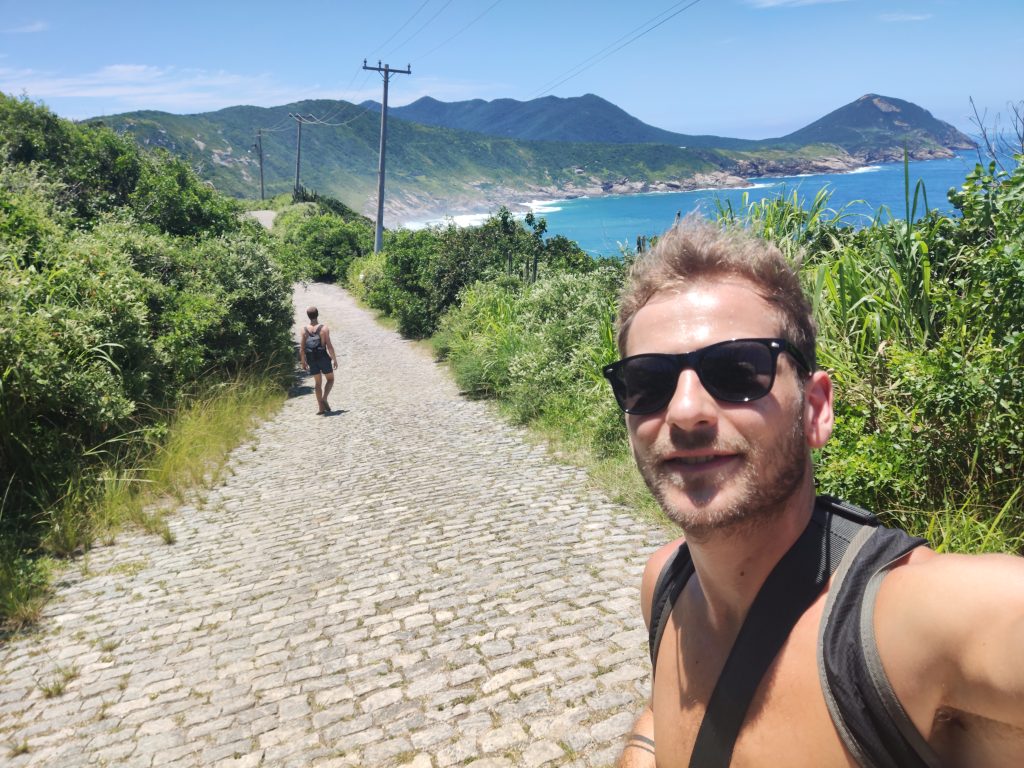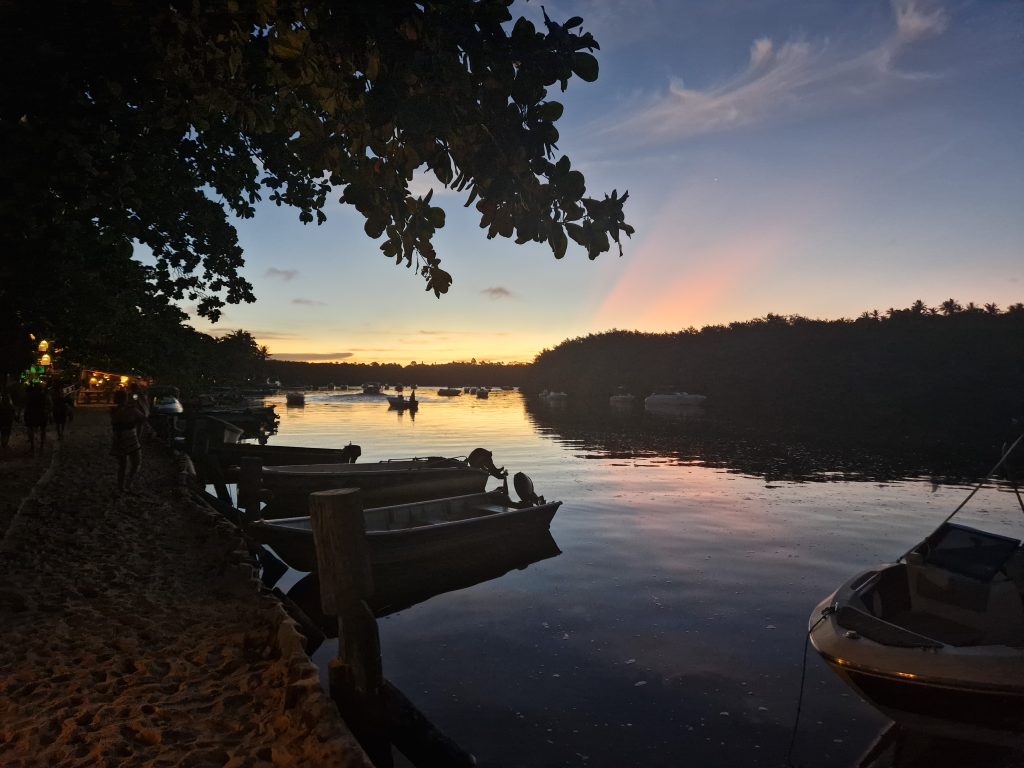Hi everyone and welcome back to this latest installment of my travel blog. Although it sometimes feels like I am just talking to myself over here, I have spoken to so many silent but avid readers over the years I am by now firmly convinced otherwise.
This year I have taken the month of February off to travel to Brazil with Victor, one of my best friends and musical partners in crime. After short stops in Sao Paulo and Rio de Janeiro where we visited existing friends, made new ones and adjusted to the climate, we spent the last days in Rio in the amazing hostel/community of Casa São Conrado, the brainchild of entrepreneur Stan who has turned a dilapidated old villa into a wondrous abode filled with twisting turns, odd hallways, a plethora of frugally yet tastefully decorated rooms and a grand deck looking out over the garden and the swimming pool. As the house is built on a hill, one descends an estimated six floors navigating the edifice before finally reaching the garden, which recedes into the actual jungle. My first association was peering into the hallways of the last Homely Home, as Tolkien calls it.
One afternoon, after discussing politics, economy and other worldly affairs with Stan with time seemingly suspended in his dream house, he told me that it was his vision to make the place a bit of a cultural hub as well. Stan loves music and envisions hosting concerts in conjunction with interesting dinners for all who are interested. I immediately liked the idea and we spent the rest of the day conjuring up plans to plan a first concert for the end of the month, where Victor and me would play a concert with musicians from Rio. With this settled and a return date agreed upon, we were free to leave for the north the next day. Later that night a surprise encounter with Pascal, one of my best friends from high school (also, as it turned out, a reader of this very blog) turned into a beautiful night talking about things old and new.
Although we intended to travel by bus, we soon realized renting a car wasn’t much more expensive and infinitely more rewarding, so a couple of hours later, we joined the vast throngs of traffic swaying in and out and all throughout Rio de Janeiro. Crossing the huge bridge over the bay marked a milestone for me as I had never ventured north past this point on my two previous journeys to Brazil. We spent the night camping near Arraial do Cabo, at the very tip of the peninsula jutting out into the Atlantic. At this scenic spot we spent some hours hiking and enjoying the beach before deciding to cut straight to Bahia, in order to make the most of our limited road trip time (which is only 17 days). By driving in shifts throughout that day and the following night we managed to cover a lot of ground, arriving in Bahia state early next morning.
Our first stop was the village of Caraíva, an obscure fishing village located on the beach in southern Bahia, surrounded by jungle. It was recommended to me by a Brazilian woman at a party to me: as we were both pretty drunk all that was left to remind me the next day was a poorly spelled entry in my notebook (Yes, I use a notebook. Phones are amazing devices but I love the old-fashioned charm of bringing a small notebook when travelling). The Lonely Planet describes Caraíva thusly: “Time moves slowly in the remote and beautiful village of Caraíva, flanked by the mangrove-lined Rio Caraíva and warm waters of the Atlantic ocean, where roads and cars don’t exist (neither did electricity before 2007). The easygoing atmosphere has long attracted those looking for a quiet pace of life to connect with nature.”
This turned out to be a description of a place long gone. As we ploughed our rental through the remaining 40 kilometres of unpaved road, we saw jungle slowly give way to agriculture. In the last two kilometres however, the road was lined with expensive heavy duty cars and ads for hostels (pousadas), parking spots and campings. Upon reaching the ferry, we were informed our car was not allowed to pass and we would have the fairly hefty sum of 70 reais (about 13 euros) to park our car and take a small boat to the other side of the river. We decided to park our car close and take an alternative way across the river.
Closer to the river’s terminus at the shore we paid to be taken across by canoe. As we neared the other side, we soon realized this was no sleepy village. The rich and beautiful from all over Brazil were playing in the surf, playing games on the shore or drinking at one of the many beach clubs. As we followed the main boulevard, this image was reinforced by the absurd prices charged for food and drinks and the ostentatious display of wealth. How could this remote village have changed so rapidly? After talking to some locals, I managed to piece together the full story.
Apparently, the town was featured in a telenovela, those perennially popular soap series that have glued Latin-Americans to their television sets for decades. This led to a substantial increase in tourism and awareness within Brazil. But what really kickstarted the radical change was the global pandemic. Caraíva was, possibly because of its remoteness, exempt (or at least unregulated) from the restrictions forced upon the rest of the country. In effect this led to Caraíva rapidly becoming a permanent beach party hotspot for the people with enough money to escape the pandemic. And I can’t blame them: the place is extremely scenic. Eco-friendly, car-free and photogenically situated between a mangrove-forested river on one side and perfect sandy beaches on the other, it has it all.
We returned to the town (tellingly dubbed “Caraíva republic” on the ubiquitous merchandise on sale) the next day for a day of lavish living, ogling (both as actors and recipients), good food, beach life and fun parties together with Brazilian traveler Fabio. One of the highlights was when the tree hanging over the bar area, which regularly drops seed pods some 5 cm across, managed to hit Victor square in the nuts. This resulted in Victor doubling over, whimpering, much to the amusement of the rest of the bar. Around 2 at night the perfectly attired crowd had devolved into a bunch of raucous revelers and we decided we had seen enough. The canoes to the other side, supposedly available around the clock, lay deserted in the surf, the refrigerator lights in the dark beach clubs further from the center failing to illuminate the scene. Obviously, we didn’t intend to walk all the way back, so we decided to borrow a canoe to get ourselves across. Our drunk selves managed relatively well until we were spotted by a severely inebriated canoe guy, who insisted he should be ferrying us across. I pretended to cough a lot but in reality I was trying to conceal my laughing at his clumsy attempt at handling our boat. After a short jungle hike we hit the sack, exhausted.
A small word about our place of residence: We were fortunate to pick the amazing eco-camping Glamping da Mata, owned by the youthful septuagenarian Mauricio, who showed us his beautiful, shady campsite with its natural water purification system, beehives, site for extracting gas from sewage and many more things. Recommended, when, if ever, you might be around. Next we’ll drive up the coast to the surfing village of Itacaré, continuing our adventure.











